April 2020
April 16, 2020
Follies of the Madmen #473
Posted By: Paul - Thu Apr 16, 2020 -
Comments (0)
Category: Anthropomorphism, Business, Advertising, Food, Stop-motion Animation, Twenty-first Century
April 15, 2020
Wearable Airbag
Designed to prevent elderly people from injuring themselves when they fall.Interesting idea, though I imagine getting people to wear these things often enough to make a difference would be a challenge.
Posted By: Alex - Wed Apr 15, 2020 -
Comments (3)
Category: Elderly and Seniors, Inventions
Veggie Cannibalism
We all know of the "animal cannibal" motif in ads. A chicken or cow or pig dressed as a chef invites the viewer to snack on his relatives. But I have never seen veggie cannibalism till this ad.Can WU-vies find other examples?

Posted By: Paul - Wed Apr 15, 2020 -
Comments (1)
Category: Animals, Business, Advertising, Cannibalism, Vegetables
April 14, 2020
How do you get to Carnegie Hall?
Carnegie Hall has a page about this famous joke:Carnegie Hall archivist Gino Francesconi says that the best version he’s heard involved violinist Mischa Elman. As the story goes, Elman was walking from Carnegie Hall toward his hotel following a rehearsal. He wasn’t happy with his playing and had his head down. Two tourists who saw his violin case asked him the question. Without looking up, he replied, “Practice.”
“He was impish enough and known for his sense of humor to come up with it,” says Francesconi.
They also sent a camera team out to ask New Yorkers how to get to Carnegie Hall:

source: Luis Dias
Posted By: Alex - Tue Apr 14, 2020 -
Comments (1)
Category: Jokes
Wisconsin Weird Statue
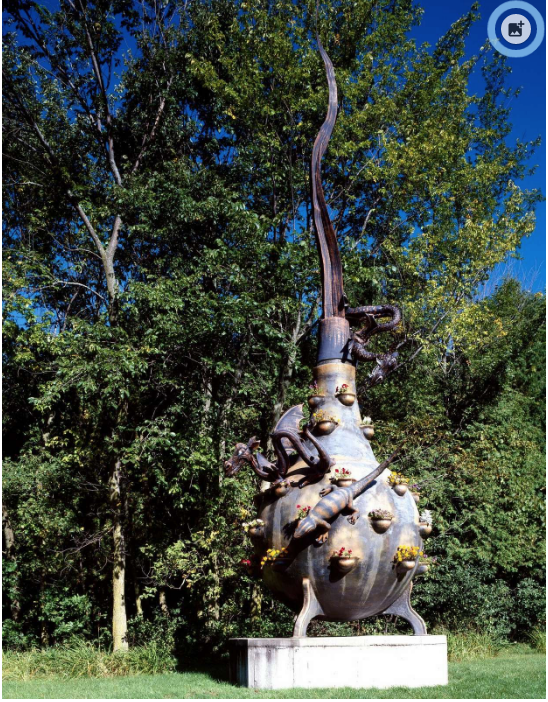
Source.
Posted By: Paul - Tue Apr 14, 2020 -
Comments (3)
Category: Art, Statues and Monuments, Eccentrics
April 13, 2020
How to buy meat

The album How To Buy Meat was released by the US Department of Agriculture circa 1968. It consists of a series of short public service announcements about meat buying, narrated by Consumer Meat Specialist Sandra Brookover.
It's an extremely rare record because it was never sold to the public. Instead, it was sent to radio stations, in the hope that they would play the PSAs.
The PSAs, in addition to offering info about meat, were intended to encourage the public to send away to receive a series of pamphlets from the USDA. Several of these pamphlets are online, such as How to buy lamb.
I searched for samples of the album online, but I could only find a single track, which was posted on WFMU's Beware of the Blog. Nothing at all on YouTube. I've reposted the track on WU's server. It's titled: How can you tell a blade chuck roast from an arm chuck roast?.


image source: discogs.com
Posted By: Alex - Mon Apr 13, 2020 -
Comments (3)
Category: Food, 1960s
Unconsented-to Staring Contest
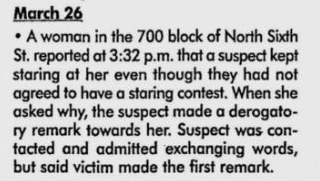
Source.
Posted By: Paul - Mon Apr 13, 2020 -
Comments (3)
Category: Annoying Things, Antisocial Activities, Awards, Prizes, Competitions and Contests, 2000s, Eyes and Vision
April 12, 2020
Anti-Aging Chair
Hattie Wiener received patents in 1991 and 1993 for an anti-aging chair. The two patents were basically variations on the same theme. The 1991 version of the chair is on the left below, and the 1993 version is on the right.Actually, in the patent write-ups she didn’t mention the anti-aging properties of the chair, but that’s how she described it to the media. She also promoted herself as an “anti-aging consultant.”
The idea was that the chair would force a person to sit upright, and thereby improve their posture and circulation. And this, in turn, would help a person stay healthy as they aged.
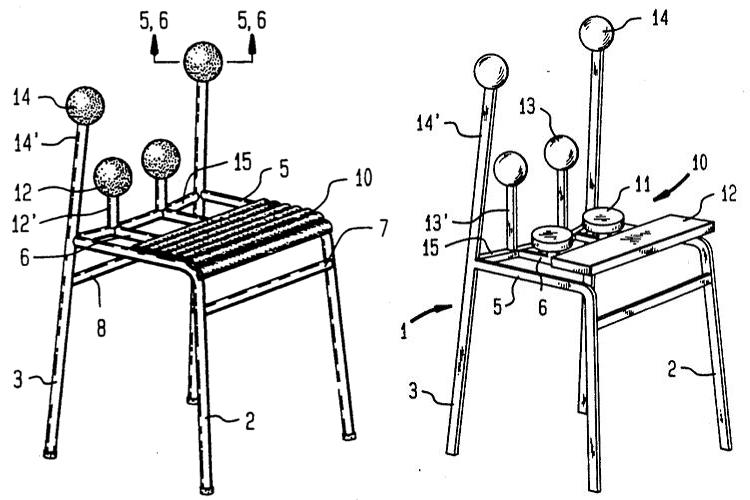
She hoped to sell the chair for $600. A lot for a fairly minimalist piece of furniture. But as far as I can tell, it never made it to market.
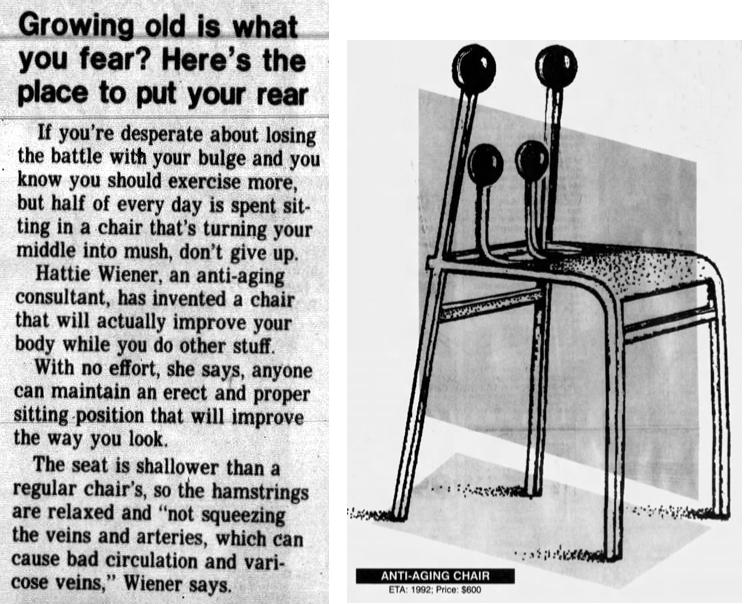
(left) The Desert Sun - Oct 27, 1991; (right) Austin American-Statesman - Nov 10, 1991
Hattie was in her 50s when she patented the chair. Fast-forward almost thirty years, and now, in her 80s, she's still in the news, but for a very different reason. She's become known as the "Tinder Granny," due to her enthusiasm for using the dating app Tinder to find hookups with younger men.
She's certainly defying the stereotypes of age. But I'm disappointed that in none of the recent pictures of her is she using her anti-aging chair. In fact, in the photo below she's totally slouching.
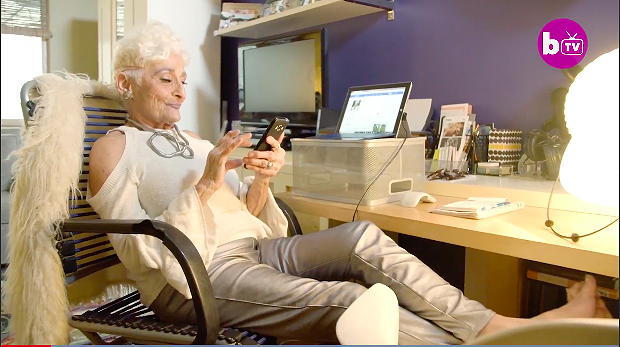
Hattie Wiener, age 83
Posted By: Alex - Sun Apr 12, 2020 -
Comments (2)
Category: Elderly and Seniors, Furniture, Inventions, Patents
James Blonde
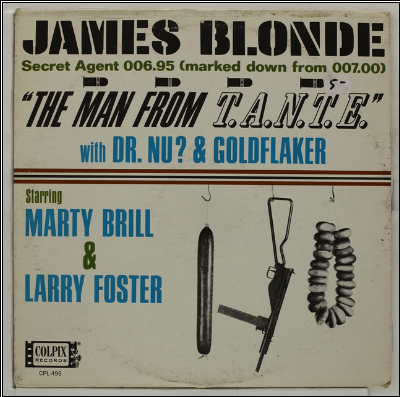
Use embedded player, or listen at the source.
Posted By: Paul - Sun Apr 12, 2020 -
Comments (0)
Category: Humor, Parody, Satire, Spies and Secret Agents, 1960s
April 11, 2020
Cat Mew Machine


New York Dispatch - Sep 19, 1963
Posted By: Alex - Sat Apr 11, 2020 -
Comments (3)
Category: Inventions, Cats, 1960s
| Get WU Posts by Email | |
|---|---|

| Who We Are |
|---|
| Alex Boese Alex is the creator and curator of the Museum of Hoaxes. He's also the author of various weird, non-fiction books such as Elephants on Acid. Paul Di Filippo Paul has been paid to put weird ideas into fictional form for over thirty years, in his career as a noted science fiction writer. He has recently begun blogging on many curious topics with three fellow writers at The Inferior 4+1. Chuck Shepherd Chuck is the purveyor of News of the Weird, the syndicated column which for decades has set the gold-standard for reporting on oddities and the bizarre. Our banner was drawn by the legendary underground cartoonist Rick Altergott. Contact Us |

